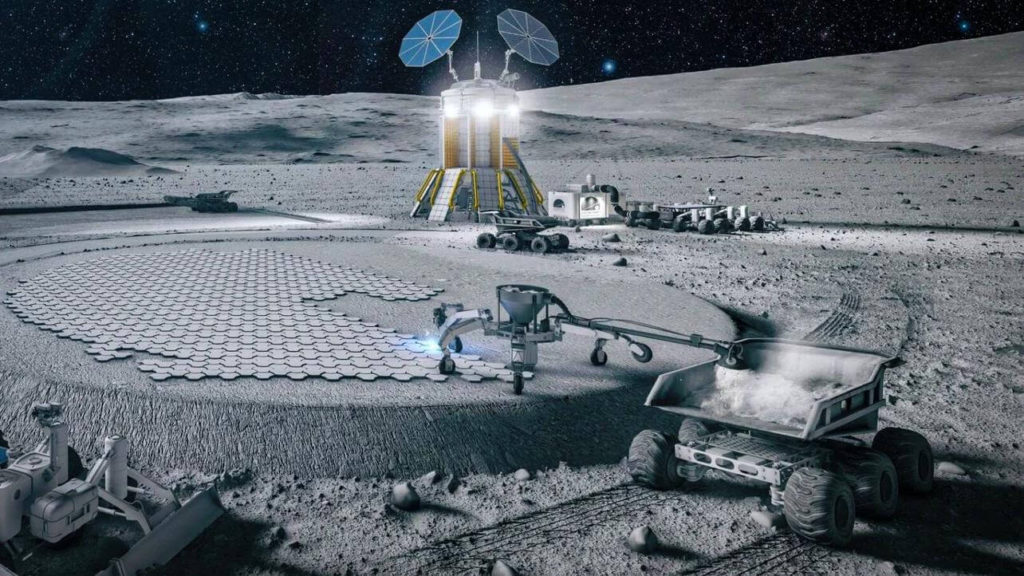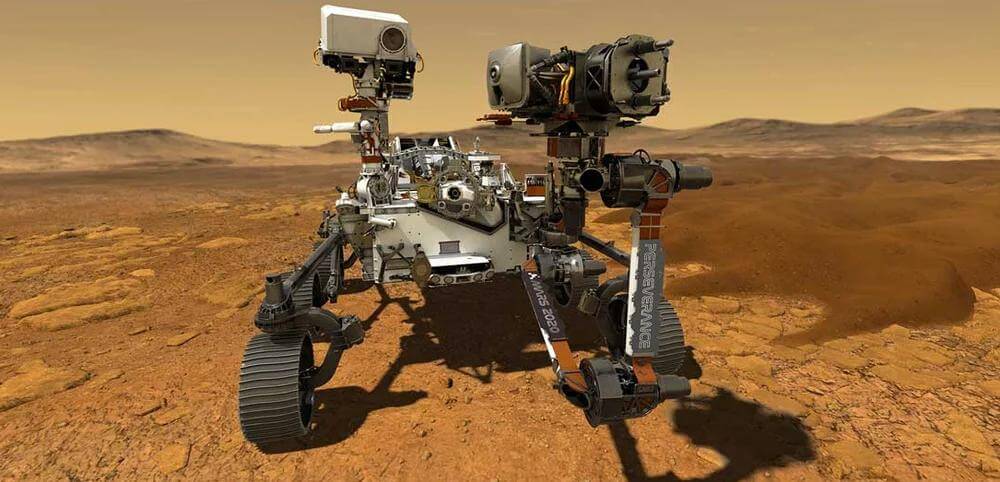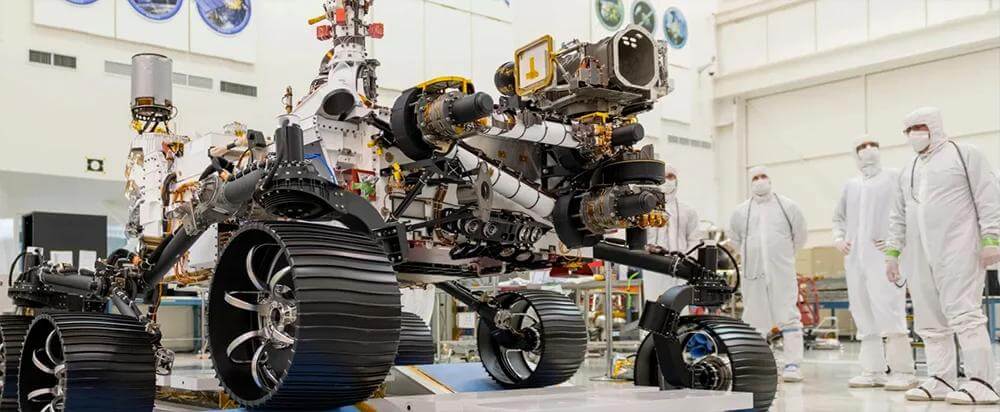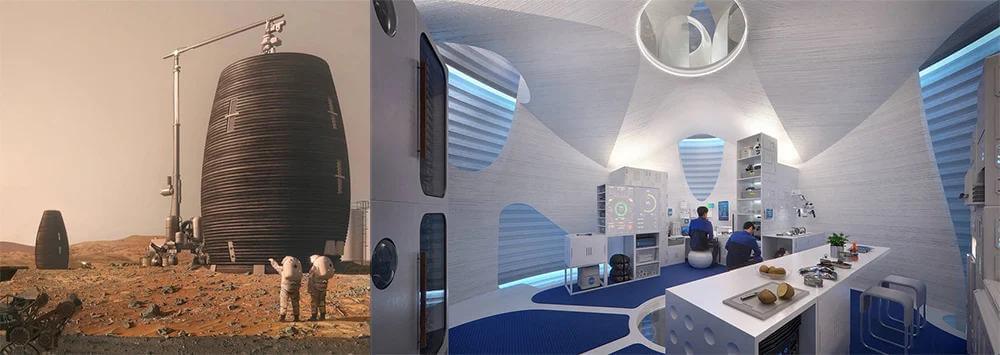
The 3D printed parts are currently orbiting the Earth, delivering satellites into orbit and roaming the surface of distant planets. See how NASA-supported innovations are driving the adoption and innovation of 3D printing here on Earth.
3D printing as a production method has developed tremendously over the last decade. Although some remain skeptical about the industry's potential, NASA - the world's leading space research and development organization - is above the moon with 3D printers. NASA has not only adopted existing technologies (there are currently 3D-printed parts on Mars), they are actively working to take supplement production to the next level through funding, research and practical application.

Although NASA has already demonstrated the ability to produce additives for the production of parts for space missions, the agency is one of the largest supporters and most enthusiastic supporters of 3D printing and has entrusted much to the ability of 3D printing to make its mission more easier and cheaper. The organization is constantly striving to push the boundaries through experimentation, research and development and by providing funding for external projects and innovators.
NASA has found that 3D printing can offer a solution to many of the issues facing human endeavors in deep space. The agency trusts the technology and constantly strives to use it where no production method has been used so far.
The results demonstrate the maturity and effectiveness of 3D printing technologies in challenging applications. And indeed, if it's good enough for NASA, 3D printing is definitely more than enough for any industry.
Let's take a look at NASA's projects, products, and advances that move the entire 3D printing industry forward.

3D printed hardware with rocket engine
Last month, NASA tested parts for rocket engines developed in partnership with Aerojet Rocketdyne, a California-based aerospace manufacturer that uses methods to make metal additives. The development team designs and manufactures light combustion chambers, along with nozzles and injectors, which will be made with 3D printing technology. The new combustion chamber and nozzle went through various tests.
The main combustion chamber tests a pressure of up to 750 psi for all tests performed and calculates hot gas temperatures approaching 3427ºC.
Aerojet Rocketdyne has invested more than 20 years in additive manufacturing technology, which it says drastically reduces the amount of touch work required to build many engine components to provide more affordable products. "Components that once took hundreds of hours to produce with traditional production techniques can now be built in just days with the help of a single machine. This significantly reduces lead times and allows us to market our products faster, ”says the company.
Mars exploration route
When the Rover of Perseverance (known as Percy) landed on Mars on February 18, 2021, it brought with it 11 3D printed metal parts. Five of the parts printed by titanium form the shell of the PIXL instrument, which looks for signs of petrified microbial life on Mars. The other six nickel parts of the superalloy can be found in the heat exchangers of the Percy MOXIE module. MOXIE creates oxygen by overheating Martian air and may produce industrial amounts of oxygen on Mars in the future.
The PIXL parts, which were 3D-printed Carpenter Additives, made the tool three to four times lighter than conventionally manufactured parts. Each MOXIE heat exchanger is printed in 3D as a whole, while conventionally processed heat exchangers must be made in two parts and welded together.

3D printed habitats of Mars
In NASA's 2019 program, the 3D Printed Habitat Challenge, found innovative ways to use 3D printing to create habitats for a future mission to Mars. The winner of the challenge was AI SpaceFactory, which created a method for 3D printing a multi-storey house on Mars using basalt fibers extracted from Martian rocks and PLA bioplastic produced from plants grown on Mars. The material is two to three times stronger and five times more durable than concrete.
"We've developed these technologies for space, but they have the potential to transform the way we build on Earth," said David Malot, CEO and founder of AI SpaceFactory. "Using natural, biodegradable materials grown from crops, we could eliminate massive non-recyclable concrete waste in the construction industry and rebuild our planet."
3D printed human tissue
The just-completed challenge of the Vascular Tissue Challenge has also expanded the boundaries of 3D printing, albeit in a slightly different direction. Both the finalists first and second used 3D printing to create gel-like shapes to grow a cube shaped like human liver tissue that can survive in the human body. According to NASA, the technologies used to create tissue pieces can lead to improved pharmaceutical research and, in the long run, to fully implanted artificial organs for transplantation.
"I can't exaggerate what an impressive achievement this is," said Jim Reuters, NASA's associate administrator for space technology. "It would be great to hear about the first artificial organ transplant one day and think that this new NASA challenge may have played a small role in making it happen."

3D printing in space on the ISS
3D printers are now floating far above the world. In fact, Redwire's first commercial microgravity plastic 3D printer was launched at the International Space Station (ISS) in 2016. Since then, it has provided manufacturing services in orbit and printed over 200 tools and major spare parts for the ISS, greatly facilitating the limited capabilities of the ISS chain. delivery.
Waiting weeks or months for critical support supplies to be shipped from Earth is not always possible. As humans travel farther into the solar system, these cargo missions will become more expensive and complex, forcing NASA to consider alternatives to spacecraft. "The ability to 3D print parts and tools on demand will drastically reduce the time it takes to launch parts into orbit, and increase the reliability and safety of space missions while reducing costs," said Redwire Made in Space, the manufacturer. on all ISS 3D printers.

As for the launch of missiles, the factor that is perhaps above all others in importance is the weight. The less weight you have to take off from Earth, the less fuel you need and the cheaper it is to start. In fact, losing one kilogram of payload weight reduces start-up costs by more than $ 10,000. Not surprisingly, NASA prefers materials that can make the parts as light and consolidated as possible. The metal chosen for NASA in 3D printing is usually titanium due to its high strength, low weight and excellent corrosion resistance.
0 Comments